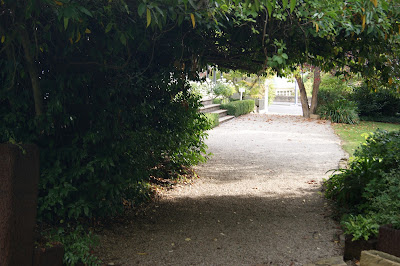The origins of Newlands seem a little obscure but it appears
that it was built sometime between 1826 and 1833 and had surrounding
agricultural interest such as orchards. The manor house influenced development
of the surrounding area and ensured that quality homes were built in the
surrounding area in order to maintain the reputation of the area. The
property passed into the hands of Captain Borthwick Wight on 12th March 1834,
it is not known if Wight ever lived at Newlands. Newlands was sold to Charles Laughlin on 14th November 1835
who ran a shipping service between Scotland
and Australia
as agent for the Australian Company. The company owned warehouses and McLachlan
became involved in many activities including whaling, banking (Managing
Director of the Van Diemens Land Bank) and politics (member of the Legislative
Council from 1832 to 1842).
By the end of the 1830's he owned Newlands and all the land
surrounding it. He had added extensively to the original dwelling so by 1839
the building was a two storey sandstone house with out buildings enclosed in a
high wall and locked gates.
In 1842 McLachlan left for London and Newlands was leased firstly to Captain Montegu (Colonial Treasurer) and then to Sir John Pedder, the Chief Justice.
McLachlan returned to Australia
where he died in Melbourne
in 1855. Shortly after his death the property was offered for sale and was
divided into 9 lots.
The next owner was George Stevenson, a young English
merchant who moved to Melbourne during the gold rush and Newlands was let to
Mr. F M Innes in July 1860.Frederick Maitland Innes lived at Newlands for many years,
during this time he was elected to the new House of Assembly and went on to be
three times Colonial Treasurer, once Premier and twice President of the
Legislative Council, he held this office until his death in 1882, a year after
he left Newlands which Stevenson sold to James MacFarlane, a successful
merchant and shipping agent in 1881.
James MacFarlane was to enjoy Newlands to
the full, adding considerably to the size and comfort of the house. He also
formed the first golf club in Tasmania
at Newlands and built a tennis court and pavilion on the grounds. MacFarlane
died in 1914 and by 1919 the land had been divided and Newlands sold to Amy
Beaumont Clifford, wife of Lord Clifford, the 12th Baron Clifford of Chudleigh.
George Young purchased Newlands from the Cliffords in 1922. He lived in the
house until late 1923 during which time he subdivided the grounds. He then
moved to Melbourne
selling Newlands to C H Lamprill, a local draper, while holding the mortgage.
The Lamprills lived at Newlands until the late 1920's. However they ran into financial trouble during the Depression and were unable
to meet their mortgage commitments to Mr. Young, who returned to the house
which he converted into flats. Just after World War 2, Mr Young sold Newlands
to his nephew, Gordon Cashmore. By the time he sold Newlands in 1954, part of
the downstairs area was being used as a reception centre, a function that would
continue to the present day.
Website: http://www.newlandshouse.com.au/








